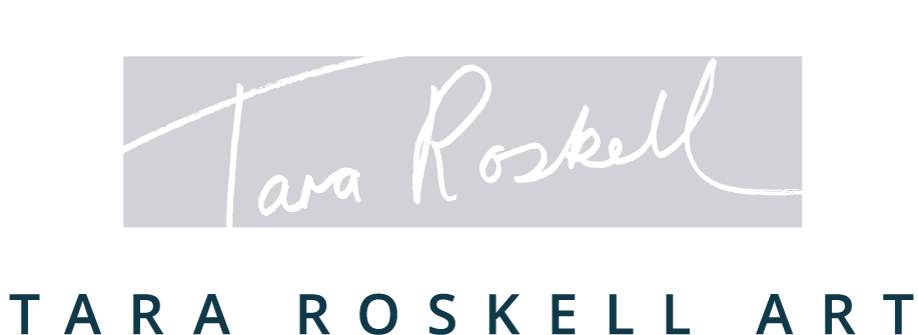I recently began painting wildlife art after spotting foxes and hares on my dog walks. It’s quite a different subject for me, as I usually paint abstract, human-like faces. I love creating abstract faces, but I wanted to explore something with broader appeal—and who doesn’t love animals like foxes, hares, or even deer and hedgehogs? (I certainly do!)
Buy Original Animal Art | Buy Wild Animal Prints
I knew from the start that I didn’t want to paint in a realistic style. I wanted the animals to be instantly recognisable, whether it's a deer or hare, but I liked the idea of incorporating an element of modern abstract painting into each piece. I also wanted them to be bold and colourful. You can read more about the inspiration behind my work and the development of my wild animal art style here.
My aim was to create art that is both accessible and visually interesting. For my abstract faces, I use acrylic ink and mixed media, but for my wildlife art— I decided to work with acrylic paint, along with wax pastels and a versatile pencil that can draw on any surface. If you’ve watched my painting videos, you’ll know that I don’t enjoy using traditional paintbrushes, so let me walk you through my art process.
My Art Process for Painting British Wildlife
Finding the Right Reference Image
I start by searching for a suitable reference image. Ironically, this can sometimes take almost as long as the painting itself, as I need to fall in love with the image. The more I connect with the reference, whether it's a hare, deer, or forest animal, the more I tend to like the final result. I don’t follow the reference slavishly, but it gives me a good starting point for creating a semi-abstract animal painting.
Sketching the Animal

Next, I sketch the animal, trying to keep the proportions reasonably accurate. This is quite unusual for me, as with my abstract faces and cityscapes, I typically work more intuitively without sketching first. However, because my animal paintings—be they hares or deer—need to resemble the actual animal, I use the sketch as a foundation for the painting.
Starting the Painting

Once I’m happy with the sketch, I begin applying the acrylic paint. I use children’s sponge brushes for this stage because they prevent me from being too precise. This may sound odd, but I find that working this way creates happy accidents, and I also love the texture it produces. I apply the paint in a blocky fashion, which achieves the modern abstract animal art aesthetic I’m aiming for. I mix a few pots of the acrylic colours I need so that I can reuse them across different paintings, ensuring colour consistency in my woodland animal paintings.

Adding Collaged Words Related to the Animal
After applying a few layers of colour, I collage words that relate to the animal I’m painting. I use acrylic matte medium to adhere the collage, which acts like a clear glue. I also paint a layer over the top to seal and protect it.

More Layers of Acrylic Paint
At this stage, I begin adding more layers of colour. I often use unexpected colours, like deep pinks, to add interest. I paint the background in either pale blue or green and sponge in similar tones to create a broken-up effect that ties into the nature aesthetic. I also like to bring some of the background colours into the animal’s face and body.

I deliberately make the animal’s face more detailed, while keeping the neck and body looser to achieve a more abstract effect.
Adding Detail to the Animal’s Face

Once I’m satisfied with the density of the acrylic layers, I use my pencil, which can draw over anything, to add fine details to the animal’s face.
Next, I bring in wax pastels. I like to apply them loosely and scribbly in some areas, creating a nice contrast with the blocky paint. The pastels also allow me to add additional details and bring the piece to life as a modern abstract animal painting.

Finally, the painting is complete. You really need to see it in person to appreciate all the marks and texture.
Buy the original deer painting
Bring Nature Inside
What better way to bring the English countryside indoors than with one of my animal art prints? Whether it’s a hare, deer, or fox, these pieces can brighten up any room, from a small home office to a living room or bedroom. My forest animal wall art and wildlife prints add a touch of nature to any space.
How to Purchase My Wildlife Art

My wildlife art is available as both original paintings and art prints. The original paintings are A2 in size (42 cm x 59.4 cm) on 1mm thick artboard. You can purchase them via my website or get in touch if you’d like more information or optional framing.
My art prints are available in sizes ranging from A5 (14.8 cm x 21 cm), A4 (21 cm x 29.7 cm), and A3 (29.7 cm x 42 cm). Other sizes are available upon special request.
Follow My Art
If you’d like to stay updated with my latest art news, please sign up for my newsletter below. You can also follow me on Facebook @tararoskellart.


